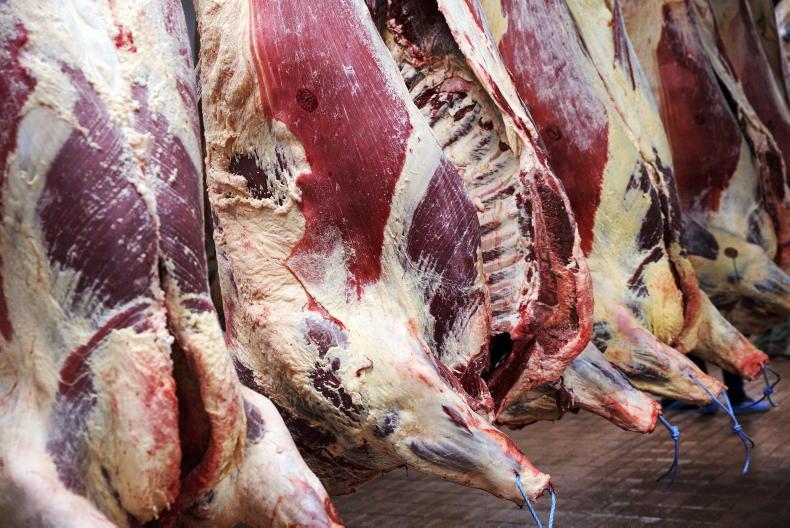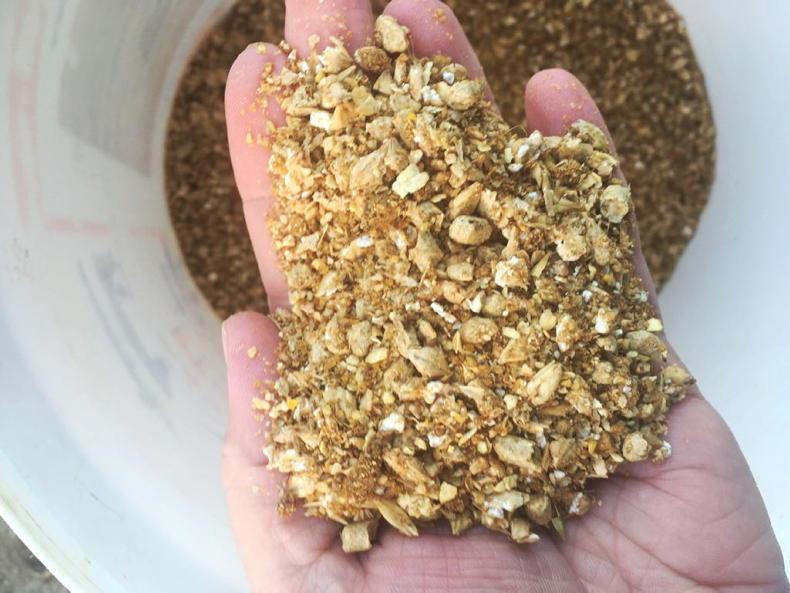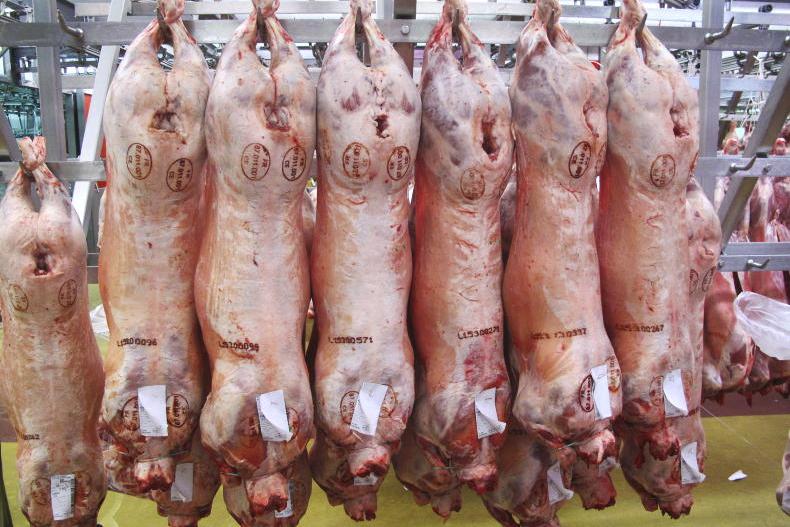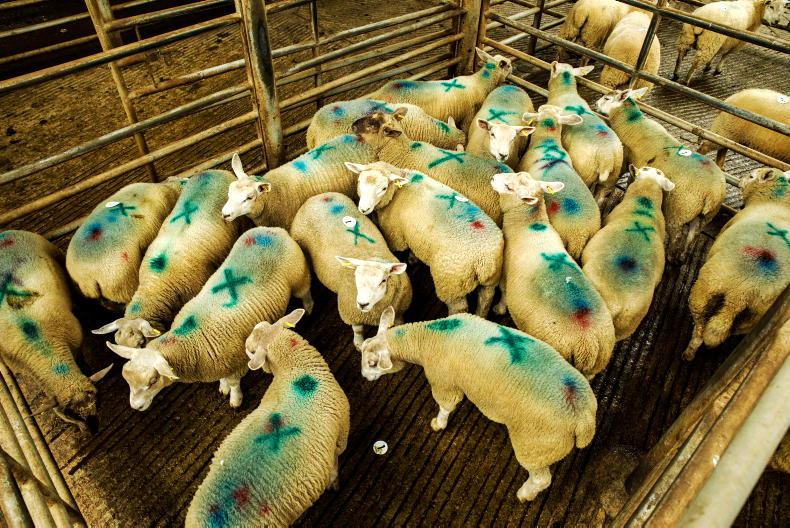One of the real negatives of
finishing cattle in this country is the lack of power that beef finishers hold when it comes to getting the best possible price for their finished cattle.
With many farmers working on low numbers of cattle when selling, and some only selling a load or less every couple of months, they don’t hold enough power to hammer out a price when selling time comes around.
Bigger finishers selling more numbers on a weekly basis have a lot more power to negotiate and many of these sellers have the clout to sit down with factories and hammer out a price deal in advance of selling. In many cases, these deals take place months in advance.
There are lots of different systems that these bigger feeders work on.
Some work off a flat price deal with an added bonus over and above what ordinary finishers are being paid each week. In recent years, more and more farmers have been moving to a bonus being paid on top of the average bonus grade (ABG) quoted each week in the Irish Farmers Journal.
This option is only available to bigger feedlot-style finishers. Smaller finishers are left with little option but to take the price available on the day.
However, producer groups are one way of harnessing the power of a number of farmers to generate enough cattle on a weekly basis to make it worthwhile for factories to work with the group. There are positives for both parties.
Farmers get a better price selling through the group. Logistics, including transport, are a little easier and more cost-efficient to organise through the group. The factory gets foresight on what’s coming down the tracks and, more importantly, when the cattle are coming. This allows them plan ahead and ensures a continuous supply of cattle for their markets.

Twenty one Friesian bullocks were finished at 348kg carcase, at 24 months, with 95% grading O. \ Brendan Lynch
Longford Cattle Producer Group
The group was set up in 2019 with the aim to harness the power of a number of finishers in the Longford area. Kevin Farrell, who farms in Ballymahon, was one of the drivers behind the group and is still heavily involved in the co-ordination of weekly supplies and
liaising with factories.
The group produces all types of cattle including cows, bulls, bullocks and heifers. Members assemble numbers on a weekly basis and then tender the cattle out on an annual basis. There were 1,280 cattle killed through the group in the last 12 months.
“Kepak would have been the factory which we have been dealing with the most over the last few years,” says Kevin Farrell. “It works both ways. We try and produce what the factory wants in terms of quality and fat scores and in return the factory pays a premium on that. It’s not so much a them and us scenario, but rather a relationship where we both have mutual respect for each other.
“We are trying to do the best for the group and the factory is trying to do the best for their business so we have to meet in the middle or a little more to our side if we can,” Kevin laughs.

A new shed constructed in 2021 has allowed Oisin to be able to increase his finishing numbers . \ Brendan Lynch
“All anyone wants is fair play and I feel the group is getting that through what we are doing and our numbers.”
Oisín and Maria Farrell are members of the Longford Cattle Producer Group and farm 60 acres just outside Ballymahon.
The farm is working hard with 106
cattle finished in 2023.
The system is unique for a smaller farmer finisher in that Oisín is concentrating on finishing cattle at the end of the second winter, just as animals are hitting two years old.
Most smaller farmer finishers have moved away from winter finishing in recent years, citing high costs and lack of price guarantees as being prohibitive to making money during the winter months.
Oisín has a different view. “We are buying our cattle in February and March when the cattle are about 12 months of age and aiming to finish the cattle in about 12 months in February/March the following year just as the animals are coming 24 months.”

Oisin Farrell. \ Brendan Lynch
Liveweight gain from grass
So what are Oisín’s secrets to success. “It’s probably all down to grass,” he says. “It’s about lowering your costs as much as
possible and concentrating on liveweight gain from grass is one of the best ways I have of doing that. We’ve been averaging between 0.9kg -1kg/day from grass from mixes of Friesians and Hereford/Angus bullocks. The next would be quality silage.
“When buying the Friesians I’m looking for a good thick black Friesian and avoiding the sharper P grading cattle.
“ I’m finishing during the winter so it’s important that I make the best possible silage that I can. I am aiming for a 20 May first cut and I’m taking out paddocks as well, which makes really good silage.
“This allows me keep the meal levels down during the winter.
“No meal is fed in the spring with meal introduced towards the end of the finishing stage. We up the meal feeding to 8-10kg/day at the very end of the finishing stage,” he says.
Oisín is working to a plan to develop the farm. A shed was built in 2021 to
facilitate keeping more cattle. He has
also managed to reseed 66% of the farm over the last three years. “We have been struggling to get reseeding done as the farm is stocked at 2.2LU/ha.”
Oisín is also open to growing some red clover silage to see if he can reduce concentrate feeding.
He is an accountant by trade so all figures are analysed to a fine level of detail. Table 1 outlines the 2023 cattle sales and profit. In terms of labour, Oisín works full time off the farm so time management is important.
“I’m spending about a half hour a day here during the summer months. We use contractors to do a lot of the work and we’re not into standing in marts for days on end picking up 1s and 2s. We generally find you can pick up bigger groups of cattle handy enough in the spring time and that streamlines the system as well.”

Longford Cattle producer group on Kevin Farrell's farm in Ballymahon, Co Longford. \ Brendan Lynch
Finishing performance
Oisín finished 106 cattle in 2023 averaging 347kg carcase weight at 24 months. Aberdeen Angus bullocks averaged 341kg with 89% grading O or better.
Twenty-one Friesian bullocks were
finished at 348kg carcase at 24 months with 95% grading O while 68 Herefords were finished at 349kg carcase weight
at 23 months with 100% grading at R or O. In terms of fat scores the vast majority were killed at a fat score of 3+ or
higher.
One of the real negatives of
finishing cattle in this country is the lack of power that beef finishers hold when it comes to getting the best possible price for their finished cattle.
With many farmers working on low numbers of cattle when selling, and some only selling a load or less every couple of months, they don’t hold enough power to hammer out a price when selling time comes around.
Bigger finishers selling more numbers on a weekly basis have a lot more power to negotiate and many of these sellers have the clout to sit down with factories and hammer out a price deal in advance of selling. In many cases, these deals take place months in advance.
There are lots of different systems that these bigger feeders work on.
Some work off a flat price deal with an added bonus over and above what ordinary finishers are being paid each week. In recent years, more and more farmers have been moving to a bonus being paid on top of the average bonus grade (ABG) quoted each week in the Irish Farmers Journal.
This option is only available to bigger feedlot-style finishers. Smaller finishers are left with little option but to take the price available on the day.
However, producer groups are one way of harnessing the power of a number of farmers to generate enough cattle on a weekly basis to make it worthwhile for factories to work with the group. There are positives for both parties.
Farmers get a better price selling through the group. Logistics, including transport, are a little easier and more cost-efficient to organise through the group. The factory gets foresight on what’s coming down the tracks and, more importantly, when the cattle are coming. This allows them plan ahead and ensures a continuous supply of cattle for their markets.

Twenty one Friesian bullocks were finished at 348kg carcase, at 24 months, with 95% grading O. \ Brendan Lynch
Longford Cattle Producer Group
The group was set up in 2019 with the aim to harness the power of a number of finishers in the Longford area. Kevin Farrell, who farms in Ballymahon, was one of the drivers behind the group and is still heavily involved in the co-ordination of weekly supplies and
liaising with factories.
The group produces all types of cattle including cows, bulls, bullocks and heifers. Members assemble numbers on a weekly basis and then tender the cattle out on an annual basis. There were 1,280 cattle killed through the group in the last 12 months.
“Kepak would have been the factory which we have been dealing with the most over the last few years,” says Kevin Farrell. “It works both ways. We try and produce what the factory wants in terms of quality and fat scores and in return the factory pays a premium on that. It’s not so much a them and us scenario, but rather a relationship where we both have mutual respect for each other.
“We are trying to do the best for the group and the factory is trying to do the best for their business so we have to meet in the middle or a little more to our side if we can,” Kevin laughs.

A new shed constructed in 2021 has allowed Oisin to be able to increase his finishing numbers . \ Brendan Lynch
“All anyone wants is fair play and I feel the group is getting that through what we are doing and our numbers.”
Oisín and Maria Farrell are members of the Longford Cattle Producer Group and farm 60 acres just outside Ballymahon.
The farm is working hard with 106
cattle finished in 2023.
The system is unique for a smaller farmer finisher in that Oisín is concentrating on finishing cattle at the end of the second winter, just as animals are hitting two years old.
Most smaller farmer finishers have moved away from winter finishing in recent years, citing high costs and lack of price guarantees as being prohibitive to making money during the winter months.
Oisín has a different view. “We are buying our cattle in February and March when the cattle are about 12 months of age and aiming to finish the cattle in about 12 months in February/March the following year just as the animals are coming 24 months.”

Oisin Farrell. \ Brendan Lynch
Liveweight gain from grass
So what are Oisín’s secrets to success. “It’s probably all down to grass,” he says. “It’s about lowering your costs as much as
possible and concentrating on liveweight gain from grass is one of the best ways I have of doing that. We’ve been averaging between 0.9kg -1kg/day from grass from mixes of Friesians and Hereford/Angus bullocks. The next would be quality silage.
“When buying the Friesians I’m looking for a good thick black Friesian and avoiding the sharper P grading cattle.
“ I’m finishing during the winter so it’s important that I make the best possible silage that I can. I am aiming for a 20 May first cut and I’m taking out paddocks as well, which makes really good silage.
“This allows me keep the meal levels down during the winter.
“No meal is fed in the spring with meal introduced towards the end of the finishing stage. We up the meal feeding to 8-10kg/day at the very end of the finishing stage,” he says.
Oisín is working to a plan to develop the farm. A shed was built in 2021 to
facilitate keeping more cattle. He has
also managed to reseed 66% of the farm over the last three years. “We have been struggling to get reseeding done as the farm is stocked at 2.2LU/ha.”
Oisín is also open to growing some red clover silage to see if he can reduce concentrate feeding.
He is an accountant by trade so all figures are analysed to a fine level of detail. Table 1 outlines the 2023 cattle sales and profit. In terms of labour, Oisín works full time off the farm so time management is important.
“I’m spending about a half hour a day here during the summer months. We use contractors to do a lot of the work and we’re not into standing in marts for days on end picking up 1s and 2s. We generally find you can pick up bigger groups of cattle handy enough in the spring time and that streamlines the system as well.”

Longford Cattle producer group on Kevin Farrell's farm in Ballymahon, Co Longford. \ Brendan Lynch
Finishing performance
Oisín finished 106 cattle in 2023 averaging 347kg carcase weight at 24 months. Aberdeen Angus bullocks averaged 341kg with 89% grading O or better.
Twenty-one Friesian bullocks were
finished at 348kg carcase at 24 months with 95% grading O while 68 Herefords were finished at 349kg carcase weight
at 23 months with 100% grading at R or O. In terms of fat scores the vast majority were killed at a fat score of 3+ or
higher.














SHARING OPTIONS